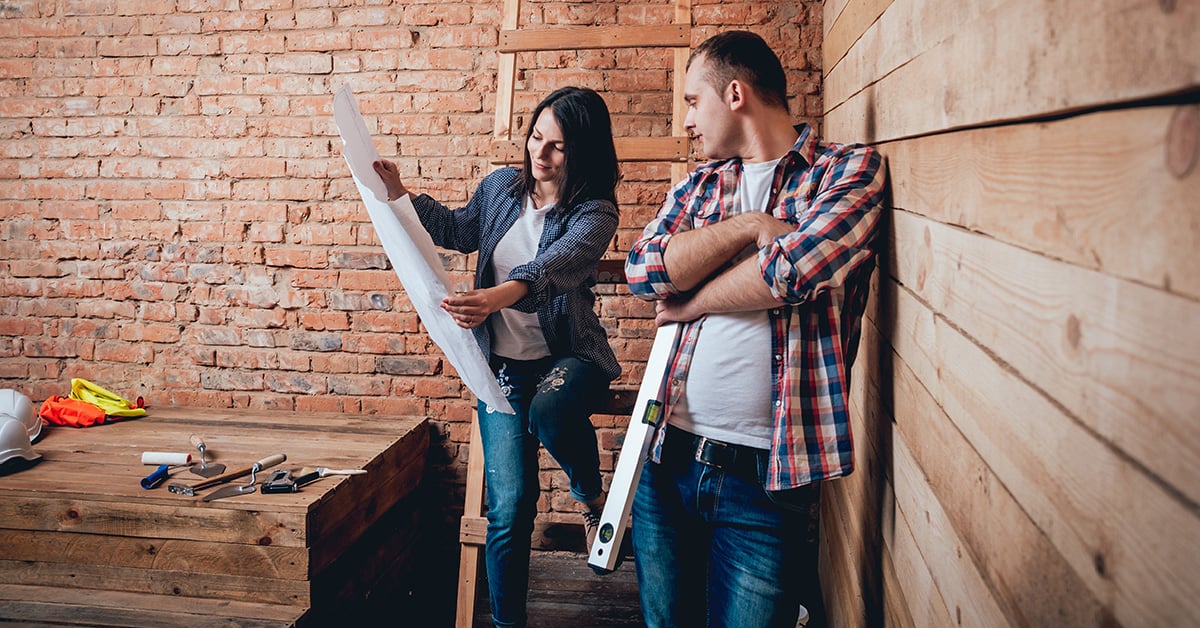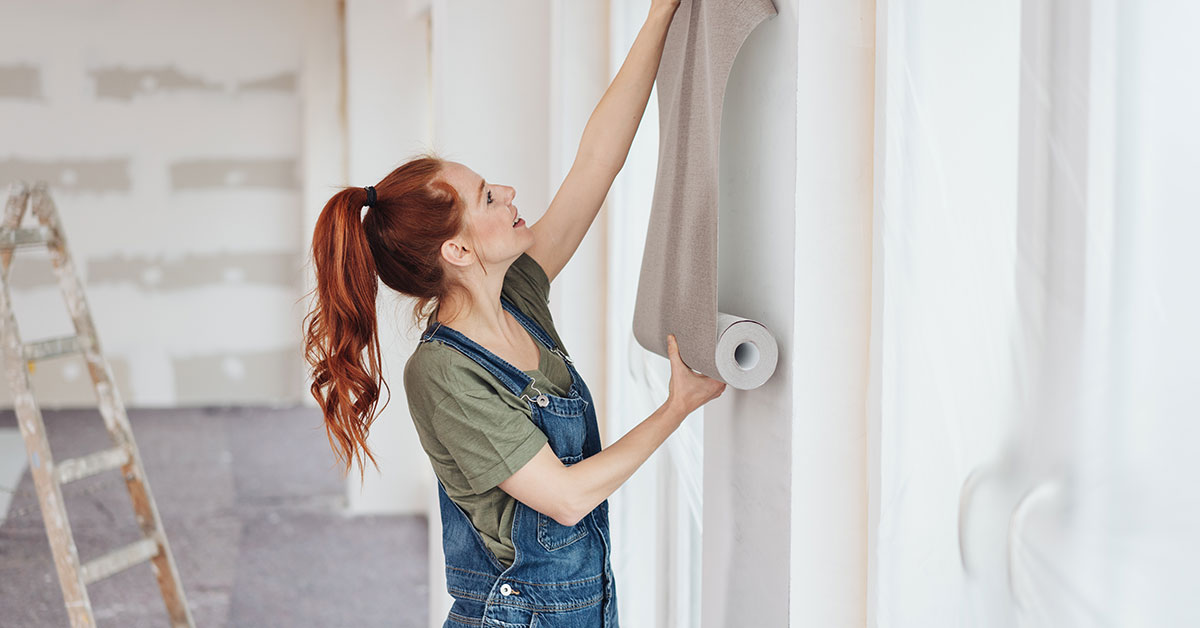Investor's Guide to Renovating Your Rental Property

Creating or expanding your investment property portfolio entails careful consideration, as does the decision to embark on renovations. When acquiring an investment property, there's a tendency to think that alterations are necessary to enhance its appeal and liveability.
Investors must bear in mind that while their investment property may not align with their personal preferences, it could meet the needs of potential tenants. Therefore, before renovating, there are several key aspects that investors should consider. First, is renovation truly required? Second, are the renovations driven by personal taste, or is there a genuine need? Lastly, are the modifications primarily cosmetic or related to infrastructure?
Strategic renovations can indeed enhance rental returns, but it's not just about the changes themselves; it's also about the timing.
Distinguishing between renovation and repair
To maximise a rental property's income potential, an investor might contemplate renovations or repairs. Sometimes, simple fixes like replacing kitchen cabinet handles or upgrading bathroom taps and showerheads are sufficient to spruce up a rental, making it more appealing to potential tenants.
In other cases, substantial renovations such as expanding the kitchen by removing walls or adding an extra bedroom may be necessary to generate interest and demand for the property.
Before embarking on any projects, it's essential to assess the property's shortcomings and prioritise areas that require upgrades. Keeping in mind the initial impressions potential tenants will have during viewings. Research is crucial to ensure renovations or repairs serve the purpose of enhancing liveability rather than merely aligning with personal preferences.
Keep in mind, renovations don’t have to be for significant changes.
Understanding market demand
Knowing when to renovate also hinges on knowing market demand. For instance, current market trends may indicate that properties with an extra bedroom, rather than an additional living area, are highly sought after. In this context, renovating the investment property to create an additional bedroom can attract more tenants during viewings.
However, market demands don't always necessitate significant alterations. Often, renters seek clean, habitable spaces they can envision as their own. In such cases, renovating the investment property may involve replacing outdated fixtures with modern finishes and painting walls and fixtures in neutral colours to cater to a broader demographic.
Understanding market demands is also essential to avoid unnecessary expenses. Investors could carry out infrastructure-related renovations, only to find that the rental market is not currently saturated with tenants. In such cases, investors may will be on the back foot carrying the renovation costs and lack of rental income.
Understanding capital requirements and tenancy conditions
The decision of when (or if) to undertake rental property renovations ultimately revolves around the desire for increased returns on investment. However, renovating unnecessarily or at the wrong time can lead to financial losses for investors.
Before initiating any changes, investors should evaluate what genuinely needs improvement to enhance profitability and liveability. After deciding on the changes and conducting research on the market and demographics, investors should then focus on the financial aspects, including capital, costs, and conditions.
Creating a budget helps to avoid surprises when the final bills arrive. This allows investors to assess whether they can comfortably afford the expenses, even in the event of extended vacancies.
Furthermore, it's crucial to undertake renovations legally and safely, obtaining the necessary consents, permits, etc to ensure the work is carried out in compliance with council and government regulations.
Considerations for planning: creating a comfortable living space
Given housing affordability concerns, many first-time renters, such as young couples and families, opt to rent rather than buy a property. Consequently, long-term tenancies are common, making it essential to provide a homely atmosphere.
When evaluating your rental property, consider whether amenities like dishwashers, dryers, or washing machines would enhance liveability. Again, don’t underestimate how meaningful simple updates such as modern fixtures and neutral colour schemes can be. It can significantly help tenants envision themselves living in your rental property.
Understanding tenants' rights
Before embarking on repairs and renovations, you must consider the impact on current tenants in the property. Most tenants may be willing to endure minor repairs if it leads to improvements, but alternative arrangements may be necessary to avoid inconveniencing them.
It is important that you get your tenants permission before starting any projects, as any repairs or maintenance that are deemed as ‘not necessary’, such as cosmetic improvements, need to be done at mutually agreed times.
Guide to renovating a rental property
The goal of renovating a rental property is to create a blank canvas that tenants can move into and make their own. Therefore, investors should focus less on personal preferences and more on making tenants feel comfortable. Here are some practical tips for renovating a rental property that will attract more tenants and gain a higher return on investment:
Prioritise areas for improvement: Start by identifying the areas in need of an upgrade, focusing on key areas such as the kitchen, living room, and essential heating/cooling appliances. Bathrooms also require attention, ensuring that all taps work and fixtures are in good condition.
Obtain approval for upgrades: Seek approval for renovations from council or body corps, if required. This process may take time. Ensure you understand any limitations and necessary building permits.
Choose durable countertops: Invest in durable kitchen benchtops that are scratch and stain-resistant, making them easy for tenants to maintain.
Opt for glass splashbacks: Glass or wall panels are a cost-effective and easy-to-clean alternative to tiled splashbacks in the long term.
Consider fingerprint-proof cabinetry: Choose cabinetry finishes that are resistant to showing fingerprints or food splatters, and opt for neutral tones to create an open, modern look.
Look for appliance packages: Source cost-effective appliance packages from reputable companies to save on costs and ensure the convenience of delivery and installation.
Increase power points: Adding extra power points, USB outlets, or wireless charging stations enhances tenant convenience and flexibility in arranging their living spaces.
Replace carpets with floorboards: Replacing old carpets with hardwood flooring or other durable alternatives not only improves cleanliness and hygiene but can also increase the property's value and rental income potential.
Is it time to renovate?
The decision to renovate hinges on practical considerations, and investors should address a variety of questions. From determining the scale of necessary changes to assessing the associated costs, renovating is a matter of what and when to change to achieve the best results.
Once you have identified the property's needs, understood market demand, and assessed the financial aspects, if you decide that your investment property requires an upgrade, you don't have to go it alone. The team of real estate professionals at LJ Hooker can assist you with their extensive property and market knowledge, helping you make renovations that maximise profitability and benefit.
Share


